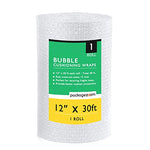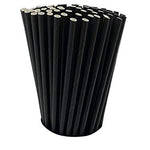You have no items in your shopping cart.
The fashion industry has evolved rapidly over the years, bringing us the concept of fast fashion, where clothing trends are produced quickly and inexpensively to meet ever-changing consumer demands. However, this convenience comes at a significant environmental cost. In this comprehensive article, we will explore the hidden environmental costs of fast fashion and explore ways to promote sustainable practices in the fashion industry. From the pollution caused by textile production to the problem of textile waste, we'll delve into various aspects of this critical issue. Together, we can strive for a more sustainable and eco-friendly future for fashion.
What are the Hidden Environmental Costs of Fast Fashion?
Fast fashion has taken the world by storm, with consumers constantly seeking the latest trends at affordable prices. But beneath the glossy exterior lies a dark truth about the environmental impact of this industry.
Textile Production and Water Consumption
The mass production of textiles requires vast amounts of water, making the fashion industry one of the most water-intensive sectors globally. From cotton cultivation to dyeing and finishing processes, water consumption is excessive, leading to water scarcity and pollution.
Chemical Pollution and Hazardous Dyes
The production of synthetic fabrics involves the use of toxic chemicals and dyes that find their way into water bodies, causing severe environmental harm. These pollutants affect aquatic life and can even find their way into the food chain, posing a threat to human health.
Carbon Emissions and Climate Change
The fashion industry contributes significantly to greenhouse gas emissions, mainly due to transportation, energy-intensive manufacturing processes, and the disposal of vast quantities of unsold garments. These emissions contribute to climate change and its adverse effects on the planet.
Waste Generation and Landfill Burden
Fast fashion encourages overconsumption, leading to massive amounts of textile waste. Most of these garments end up in landfills, where they take years to decompose, adding to the burden of waste management and contributing to environmental degradation.
Exploitative Labor Practices
Fast fashion's focus on cheap labor often leads to exploitative working conditions for garment workers, particularly in developing countries. Unfair wages, long working hours, and lack of job security are common issues in this industry.
How Can We Promote Sustainable Practices in the Fashion Industry?
Despite the challenges posed by fast fashion, several solutions and sustainable practices can help mitigate its environmental impact. By making conscious choices, both as consumers and industry players, we can pave the way for positive change.
Embrace Slow Fashion and Ethical Brands
Slow fashion promotes the idea of investing in high-quality, timeless garments that are ethically produced and designed to last. Supporting ethical brands that prioritize fair wages, worker rights, and sustainable practices encourages a shift towards a more responsible industry.
Opt for Sustainable Fabrics
Choosing sustainable fabrics such as organic cotton, hemp, bamboo, or recycled materials reduces the environmental impact of fashion. These fabrics are produced using fewer chemicals and less water, making them eco-friendly alternatives to traditional textiles.
Adopt Circular Fashion
Circular fashion aims to create a closed-loop system, where garments are designed to be reused, repaired, or recycled. Implementing circular economy principles in the fashion industry can significantly reduce waste and conserve resources.
Reduce, Reuse, and Recycle
As consumers, we can contribute to sustainability by reducing our clothing consumption, reusing garments through clothing swaps or thrift shopping, and recycling textiles to prevent them from ending up in landfills.
Support Local and Artisanal Fashion
Purchasing locally-made and artisanal products not only supports local economies but also reduces the carbon footprint associated with long-distance transportation.
Promote Fashion Education and Awareness
Increasing awareness about the hidden environmental costs of fast fashion is crucial for driving change. Fashion education programs, awareness campaigns, and transparent reporting on supply chain practices can empower consumers to make informed choices.
FAQs
Can sustainable fashion be stylish and trendy?
Absolutely! Sustainable fashion doesn't have to compromise on style. Many ethical brands offer trendy and fashionable clothing that aligns with sustainable principles.
How can fashion brands improve their sustainability practices?
Fashion brands can improve sustainability by adopting eco-friendly materials, implementing circular fashion models, reducing waste, and ensuring ethical labor practices throughout their supply chain.
Is recycling clothing an effective solution?
While recycling clothing is beneficial, it's essential to prioritize reducing and reusing garments before resorting to recycling. Recycling still consumes energy and resources, so it should be part of a broader sustainability strategy.
How can consumers make a difference?
Consumers can make a difference by choosing sustainable brands, supporting local businesses, buying fewer but higher-quality items, and embracing second-hand shopping.
What role do policymakers play in promoting sustainability in fashion?
Policymakers can implement regulations and incentives that encourage sustainable practices in the fashion industry. This could include promoting circular economy initiatives, banning harmful chemicals, and supporting ethical labor standards.
Can sustainable practices be cost-effective for the fashion industry?
While sustainable practices may require initial investments, they can lead to long-term cost savings and improved brand reputation, making them financially viable in the long run.
The hidden environmental costs of fast fashion are undeniable, but the fashion industry has the power to effect positive change. By embracing sustainable practices, adopting circular fashion, and promoting ethical choices, we can create a more eco-friendly and responsible fashion industry. As consumers, our choices matter, and by supporting sustainable brands and making conscious decisions, we contribute to a better and more sustainable future for fashion.








